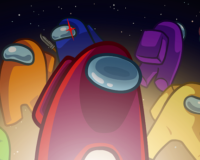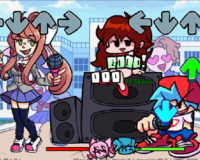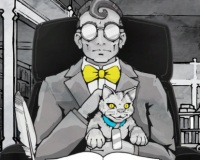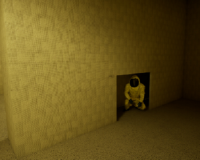
Advertisement
Van Stalker
Van Stalker begins in an ordinary evening setting. You control Max, a teenager left home alone. At first, everything seems quiet—until a van starts showing up outside. It doesn’t rush or threaten directly; it just waits. The vehicle’s constant presence becomes the focus of the experience. Every time you check the window or step outside, the van is somewhere nearby. You cannot be sure if it’s coincidence or intention. From this point, your goal becomes simple but uncertain: stay alive through the night while understanding what is happening.
The Nature of the Pursuit
The van never attacks, but its behavior manipulates your decisions. You start paying attention to distance, sound, and routine. It appears across the street, then disappears, then reappears closer. Sometimes it idles silently; sometimes its lights flash without cause. The Condition-style tension builds through absence rather than confrontation. You begin to track its movements even when you cannot see it, guessing where it might appear next. Each choice—stay inside, explore outside, call for help—feels like it might expose you further.
The Loop of Survival
Van Stalker’s gameplay follows a repeating pattern that defines the tension of each moment:
- Observe surroundings and identify the van’s current position.
- Move between rooms to manage visibility and safety.
- Use light sources and noise carefully to avoid drawing attention.
- Interact with key objects that provide brief protection or distraction.
- Endure the passing of time until the final encounter triggers.
This structure ties progress to perception. The more you look, the more you risk being seen, making curiosity both necessary and dangerous.
The Shift in Reality
As the game continues, logic starts to unravel. The van appears inside places it should not fit. Its shape changes under flickering light. Doors that once led to safety now open into darkness. The environment begins reflecting your own uncertainty, and you lose the sense of what is real. The van becomes more than a vehicle—it represents attention itself. Every attempt to ignore it strengthens its control. You realize that the true danger is not pursuit but fixation.
The Ending and the Meaning
Van Stalker concludes without clear resolution. Whether you escape or confront the van, the story ends in silence. The question of what followed you remains unanswered. The experience transforms fear into reflection, showing how observation can create the very thing it tries to avoid. The title becomes literal and symbolic: the van stalks, but so does the mind, circling itself in loops of awareness and doubt. When the screen fades, the sound of an idling engine still lingers, as if waiting for you to look again.
















































































